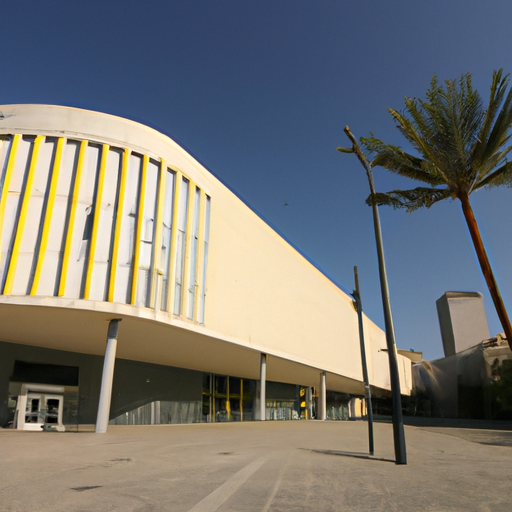This blog post delves into the rich tapestry of art and literature in Israel, exploring the unique amalgamation of influences that have shaped the country’s contemporary cultural scene. It illuminates the way in which this small but dynamic country has produced a diverse array of artistic and literary works, reflecting its complex history and diverse society.
The Evolution of Israeli Art: An Exploration of its Roots and Influences?
Israeli art has a rich and diverse history that reflects the complex tapestry of cultures and influences that have shaped the country over the years. From its early roots in biblical and religious art to the modern and contemporary expressions that push boundaries and challenge conventions, Israeli art has evolved in response to the ever-changing social, political, and cultural landscape. Artists in Israel draw inspiration from a multitude of sources, blending traditional Jewish motifs with elements of Middle Eastern, European, and American art to create a unique and vibrant artistic language. This fusion of influences has given rise to a dynamic art scene that continues to captivate audiences both at home and abroad.
Israeli art is deeply rooted in the land’s rich history and heritage, with many artists drawing inspiration from the biblical narratives, ancient traditions, and the diverse ethnic communities that call Israel home. The landscape itself serves as a powerful muse, with its stark deserts, lush valleys, and historic cities providing a backdrop for artistic exploration and expression. Over the years, Israeli artists have grappled with themes of identity, belonging, conflict, and coexistence, creating works that resonate with universal truths while also speaking to the unique challenges and experiences of life in Israel.

A panoramic view of the Tel Aviv Museum of Art, a beacon of contemporary art in Israel
Literature in Israel: A Mirror Reflecting Society?
Literature in Israel serves as a powerful mirror reflecting the multifaceted layers of Israeli society, providing a window into the complexities, challenges, and triumphs of the nation. Israeli writers have long grappled with themes such as identity, conflict, immigration, and the search for belonging, capturing the essence of the country’s diverse population and the ongoing struggles for peace and coexistence. Through the written word, Israeli authors illuminate the human experience in all its complexity, shedding light on the joys and sorrows, the hopes and fears, that define life in Israel.
Israeli literature often serves as a platform for dialogue and reflection, inviting readers to engage with difficult questions and explore the nuances of Israeli society from multiple perspectives. Writers such as Amos Oz, AB Yehoshua, and David Grossman have become renowned for their ability to weave personal narratives with broader social and political themes, offering insights into the inner workings of Israeli society and the challenges facing its people. Whether through novels, poetry, or essays, Israeli literature captures the zeitgeist of the nation, providing a voice for those who might otherwise go unheard.
“The Israeli Art Scene: A Melting Pot of Cultures”
The Israeli art scene is a vibrant tapestry woven from the threads of diverse cultures, traditions, and influences, reflecting the country’s rich history and complex identity. Drawing from the mosaic of Jewish, Arab, European, and North African heritage, Israeli artists create works that transcend boundaries and challenge perceptions, offering a unique blend of perspectives and voices. From the colorful paintings of Yemenite Jewish artists to the avant-garde installations of Tel Aviv’s contemporary art galleries, the Israeli art scene is a melting pot of creativity and innovation, where artists from all backgrounds come together to explore, experiment, and collaborate.
The fusion of cultures in Israeli art provides a dynamic platform for cross-cultural dialogue and exchange, fostering connections and understanding between communities that might otherwise remain isolated. By embracing diversity and celebrating difference, Israeli artists create a space where cultural fusion becomes a source of inspiration and creativity, pushing the boundaries of artistic expression and challenging conventional norms. The streets of Jerusalem, the galleries of Haifa, and the studios of Jaffa buzz with the energy of artists from all walks of life, each contributing their unique perspective to the ever-evolving landscape of Israeli art.

A vibrant street art in the heart of Tel Aviv, reflecting the city’s dynamic art scene
“In the Words of Amos Oz: ‘Art is a House that Tries to Be Hospitable to More than One Host'”
“In the Words of Amos Oz: ‘Art is a House that Tries to Be Hospitable to More than One Host'”: These profound words encapsulate the essence of Israeli art and literature, serving as a guiding principle for creatives seeking to bridge divides and foster understanding Amos Oz, a celebrated Israeli writer, understood the power of art to transcend boundaries and bring people together, regardless of their background or beliefs. By embracing multiple perspectives and welcoming diverse voices, art becomes a sanctuary where differences are celebrated and common ground is discovered.
Oz’s analogy of art as a house reflects the inclusive nature of the Israeli cultural landscape, where artists strive to create spaces that are open and welcoming to all. Just as a house accommodates guests from various walks of life, Israeli art invites viewers to explore different narratives, engage with unfamiliar viewpoints, and challenge preconceived notions. In this spirit of hospitality, art becomes a conduit for dialogue, empathy, and connection, fostering a sense of shared humanity that transcends political, religious, and social divides.
Israel, despite its relative youth and small size, has a thriving art and literature scene that is as diverse as the nation itself. These artistic forms not only depict the country’s history and society but also play a crucial role in shaping its future. The exploration of art and literature in Israel provides a unique lens through which to understand the depth and complexity of this fascinating country.
